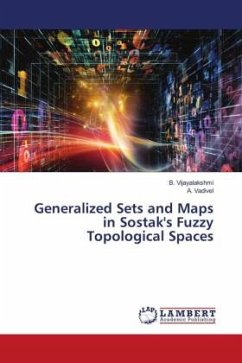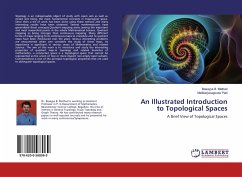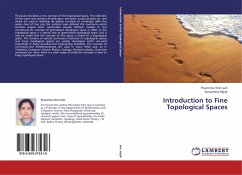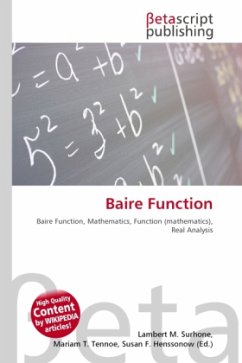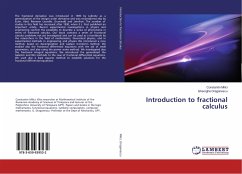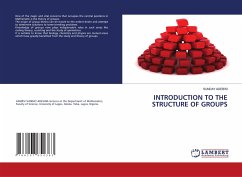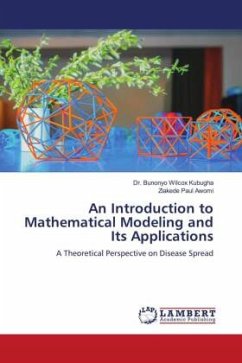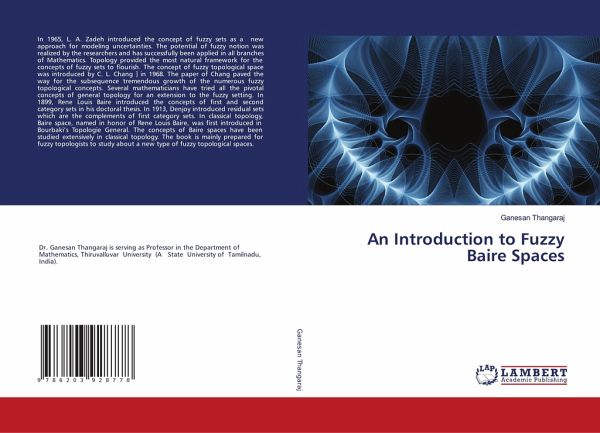
An Introduction to Fuzzy Baire Spaces
Versandkostenfrei!
Versandfertig in 6-10 Tagen
27,99 €
inkl. MwSt.

PAYBACK Punkte
14 °P sammeln!
In 1965, L. A. Zadeh introduced the concept of fuzzy sets as a new approach for modeling uncertainties. The potential of fuzzy notion was realized by the researchers and has successfully been applied in all branches of Mathematics. Topology provided the most natural framework for the concepts of fuzzy sets to flourish. The concept of fuzzy topological space was introduced by C. L. Chang ] in 1968. The paper of Chang paved the way for the subsequence tremendous growth of the numerous fuzzy topological concepts. Several mathematicians have tried all the pivotal concepts of general topology for a...
In 1965, L. A. Zadeh introduced the concept of fuzzy sets as a new approach for modeling uncertainties. The potential of fuzzy notion was realized by the researchers and has successfully been applied in all branches of Mathematics. Topology provided the most natural framework for the concepts of fuzzy sets to flourish. The concept of fuzzy topological space was introduced by C. L. Chang ] in 1968. The paper of Chang paved the way for the subsequence tremendous growth of the numerous fuzzy topological concepts. Several mathematicians have tried all the pivotal concepts of general topology for an extension to the fuzzy setting. In 1899, Rene Louis Baire introduced the concepts of first and second category sets in his doctoral thesis. In 1913, Denjoy introduced residual sets which are the complements of first category sets. In classical topology, Baire space, named in honor of Rene Louis Baire, was first introduced in Bourbaki's Topologie General. The concepts of Baire spaces have been studied extensively in classical topology. The book is mainly prepared for fuzzy topologists to study about a new type of fuzzy topological spaces.



